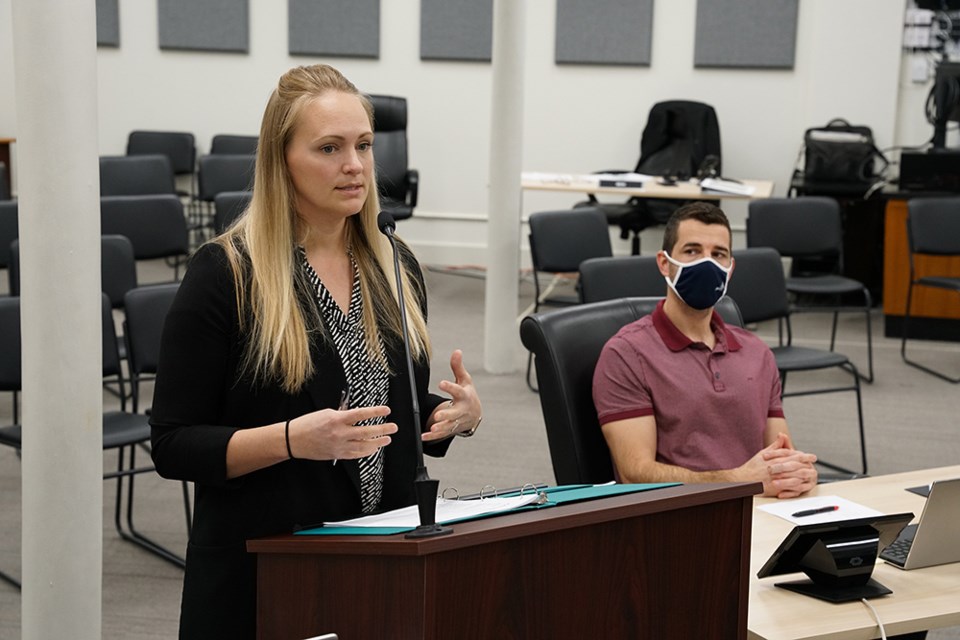City of Powell River councillors were recently presented with a primer into long-term debt, which indicated the city has taken a prudent approach.
Speaking to the finance committee on October 28, Mallory Denniston, manager of accounting services, said all BC municipalities have regulations on the kind of debt they can assume. All of the debt needs to be for capital projects, constructed or purchased, according to Denniston.
Long-term debt needs to be issued from the Municipal Finance Authority of BC, which pools all of the municipalities’ borrowing needs to provide competitive rates and flexible terms, said Denniston. Debt-servicing costs need to be below the established annual liability servicing limit.
“The city is operating within these very important restrictions,” said Denniston.
She defined the difference between short-term and long-term debt, as outlined by the municipal finance authority. Short-term debt is that which is five years or less, she said, and terms such as 10 to 30 years are classified as long term. The city currently has $720,000 of short-term debt.
In 2020, short-term debt expended on the library, garbage trucks, lot A of district lot 450 and 2019 capital projects were retired with funds from the COVID-19 safe restart reserve, according to Denniston. Looking forward, in the 2021 to 2025 financial plan, there is $720,000 for the land purchase from Powell River Waterfront Development Corporation, 700,000 for the airport runway extension and $250,000 for the resource-recovery centre road.
Currently, short-term debt makes up three per cent of total city debt and the current interest rate is 0.94 per cent, which is “extremely favourable.”
Denniston said looking at long-term debt, excluding the consolidated wastewater treatment plant, there are five existing long-term loans totalling $9.2 million, which is about 37 per cent of the city’s total debt. Interest rates range from 0.91 to 5.1 per cent and these loans will mature between 2025 and 2046.
The loans are for roads, the recreation complex upgrade, Millennium Park, the north harbour and the library. Denniston said the north harbour loan is 51 per cent of this balance and that is self-funded by north harbour operations. Moorage fees cover operating costs for the harbour and debt servicing costs for the loan, said Denniston.
With regard to the wastewater plant, it is an $83 million project, with about $55.7 million in grant funding from the federal government and the province, according to Denniston.
“This leaves the city with $27.28 million to be secured,” said Denniston. “This will be secured between 2020 and 2024 in five separate issues. This will diversify the interest rate risk and allow us to take money as needed.
“This debt has a 30-year amortization period and currently accounts for 60 per cent of the city’s total long-term debt. By 2024, the wastewater treatment plant will be about 75 per cent of the city’s total debt.”
Municipal comparisons
Denniston performed a comparison of Powell River’s debt to those of other municipalities, from lowest to highest. Powell River ranked 127 out of 151 BC municipalities that contributed financial data. She said this makes sense, given that most of the other municipalities can share the debt of big projects such as the wastewater treatment plant with regional districts.
Denniston then outlined the limits on the annual cost of servicing financial liabilities. She said it is calculated at 25 per cent of controllable and sustainable revenue. Examples of that revenue are property taxes, sale of services and unconditional grants, said Denniston.
“This is a provincial control to assure financial stability,” added Denniston. “Powell River’s limit in 2021 is projected to be about $7.8 million. We are projecting to spend $2.2 million in debt servicing costs, which leaves us with $5.6 million in room before hitting our limit, which is a lot of room.
“Powell River has used 28 per cent of the total limit capacity that we have before hitting our limit. There’s a lot of room there for interest rate risk, unexpected capital projects and things of that nature.”
Denniston said the city is operating well within its liability service limit.
“The city has a very conservative approach to long-term debt,” she added.
In a report to the committee, Denniston stated that the city could borrow up to an additional $112 million before reaching the annual liability servicing limit.
“This means the city could quadruple its debt before reaching the annual liability servicing limit,” stated Denniston. “The city is only taking on long-term debt for capital projects that have gone through a rigorous approval process.”
Tla'amin service
Councillor Jim Palm said in terms of sharing of cost on liquid waste, hopefully there will be a request from Tla’amin Nation to come on board with the consolidated wastewater treatment plant and that would bring some funding forward to contribute financially to the project.
“I’m holding my breath for someone to pick up the phone and say they’ve done their due diligence and they’d like to come to the city and hook up,” said Palm. “Let’s hope that happens.”
Finance committee chair councillor George Doubt said he agrees with Palm about the city looking forward to possibly providing service to Tla’amin for the wastewater treatment plant, with a commensurate contribution to the cost.
Doubt thanked Denniston for the report and said it was extremely thorough.
“There’s lots of tables and lots of good information and I’m sure members of the public will be quoting it back to us,” said Doubt. “I want to point out what I think is the most important and pertinent sentence in the report, which states: under financial impact, that the city has a prudent approach to long-term debt and is operating well within the liability servicing limit.
“It’s a good expression of where the city is with regard to long-term debt. We have a significant amount, and it may be higher than average, but there’s reasons for that and it’s well within the limits, and it’s prudent.”



